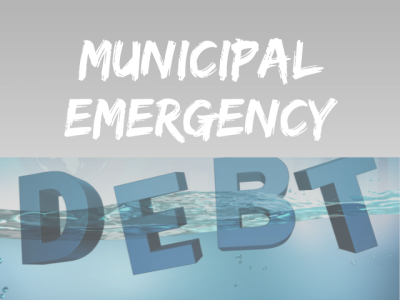
Testimony to the Senate Finance Committee
Regarding Flood-Related Municipal Financing (H.397)
Samantha Sheehan, Municipal Policy and Advocacy Specialist, VLCT
May 21, 2025
July 10, 2024 Municipal Flood Damages
Examples of outstanding emergency debt pending FEMA reimbursement:
Lyndon: $15M (2x the town budget)
Moretown: $8.25M
Middlesex: $7M (3x the town budget)
Cavendish $1.6M
Barnet: $1.5M
Bridgewater: $3M (2x the town budget)
Of the municipal entities impacted by the 2024 floods, one third (1/3) make up 91% of the total estimated damages.
Two thirds (2/3) of the municipalities impacted were also impacted in July 2023, and 64% of those are towns with a population less than 2000.
Section 10: Unassigned Fund Balance
We recommend action to allow municipalities to employ the prudent fiscal practice of providing for unassigned fund balance within the municipal general fund budget.
Establishing an Unassigned Fund Balance would:
assist in cash flow management
stabilize the tax rate
improve emergency response
significantly strengthen municipalities' financial resiliency in the case of unexpected negative economic trends
improve grant readiness by making flexible monies available
improve the municipality's borrowing position, saving taxpayers money on the cost of municipal debt.
Section 7: Emergency Borrowing
VLCT and the Vermont Bond Bank request a new authority to borrow for up to a five-year repayment period in the case of an all-hazards event.
Vermont municipalities have become increasingly familiar with complex and extensive processes required to access emergency funding and FEMA Public Assistance.
In the wake of flooding and major weather events, municipalities cannot wait to rebuild vital town infrastructure or to restore municipal services.
State law substantially limits the authority of local legislative bodies to acquire funding for emergency response as they can only take on debt for up to one year without a town vote.
Section 8: Denominations; Payments; Interest; Level Debt Service
To improve predictability for municipalities and for taxpayers, VLCT and the Vermont Bond Bank request a change to allow for flexibility in bond repayments to include level debt option. Members of the Vermont School Board Association and Superintendents Associations have also expressed support for this change.
Current statute requires municipal loans to be level principal.
Debt payments for level principle borrowings start high and decrease yearly as the cost of interest goes down.
Municipalities should have the option to structure level debt or level principle.
This is more within the norms of government borrowing nationally.
Section 11: Local Option Taxes Change to 75/25
VLCT Supports an amended withholding ratio of 80/20
- Through FY25, 34 municipalities have acted to adopt LOT and five municipalities approved one or more LOT at their 2025 Town Meeting.
- Currently, all 34 LOT communities established this taxing authority through a charter process and most have obligated these revenues to support a range of local initiatives.
- There is a long history of legislative actions to revise the LOT program.
- Act 60 of 1997 authorized LOT for a limited time at 60/40.
- Various Acts extended the sunset and modified criteria for municipalities.
- Act 215 of 2005 established the current 70/30 split of LOT revenues between municipalities and the PILOT Special Fund and removed the sunset.
In the 2024 Miscellaneous Tax bill, non-chartered municipalities were granted the authority to adopt LOT.
75/25 Maintains an Excessive Surplus
Assuming FY26 PILOT Fund Appropriations will be $14.542 million ($12.2 for PILOT payments). The FY24 end-of year surplus is $10.3 million. The FY25 end-of-year surplus is projected to be over $14 million.
| Projected FY26 PILOT Surplus | $14,200,000 | Projected FY26 PILOT Surplus | $14,200,000 | |
| Minus FY26 Appropriations | $14,542,000 | Minus FY26 Appropriations | $14,542,000 | |
| Plus 75/25 state revenue share | $14,000,000 | Plus 80/20 state revenue share | $11,200,000 | |
Future PILOT Surplus retained | $13,568,000 | Future PILOT Surplus retained | $10,858,000 |
80/20 LOT Formula is Sustainable
A $10.8 million surplus provides a 3- to 5-year ramp for LOT revenues to catch up to expenses for statutory obligations for the PILOT Special Fund.
- 80/20 would create a ~$3.3M delta between revenues and expenses in FY26.
- Prior to the law change for LOT eligibility, the State's share of LOT revenues increased by approximately $6 million between FY21 and FY24.
- A substantial favorable change in the LOT formula is likely to encourage more towns to consider adding LOT.
- The factors driving increasing LOT revenues include:
- All towns are now eligible to create a new LOT by town vote
- Wayfair Decision = online retail sales
- Cannabis sales
- The proliferation of short-term rentals
- General growth in consumption tax receipts, up over 40% post-pandemic